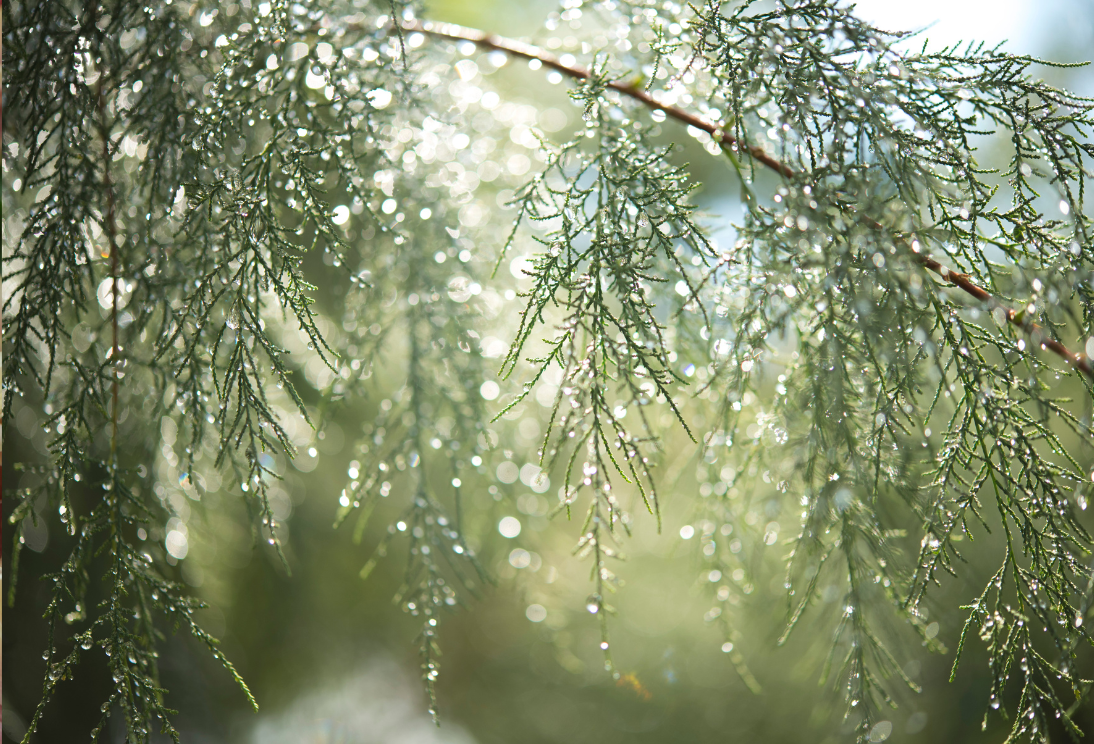
The weather: impact of rain and drought on your garden
|
Tijd nodig om dit artikel te lezen: 4 min
|
Tijd nodig om dit artikel te lezen: 4 min
Long periods of drought, very hot summers, and occasional intense rain showers are becoming part of our climate, we can no longer ignore it. Fortunately, we as humans can adapt relatively quickly, but the garden is not always optimally adjusted to this. Some plants find it harder to survive, certain species love it, and we have to approach our garden a little differently. In this blog post, we are happy to share our tips to optimally adjust the garden to the new weather conditions and make it climate-proof.
We sometimes curse the heavy rain showers, but rain is of course essential in our garden. Without water, nothing can grow and everything inevitably dries out.So make sure the water can penetrate the soil as quickly as possible: provide permeable paving or remove tiles where possible. You've probably seen it before: bare soil washes away very quickly in heavy rain. The soil in the garden impoverishes and dries out in the long term because it cannot retain moisture. The solution is very simple: try to plant as much soil as possible. Plants retain moisture better and prevent the soil from becoming impoverished.
The fun of picking starts here! From a small city garden to a picking garden, greenhouse or vegetable garden: Angelo Dorny can make your garden dreams come true. Come join us in the garden! Order now from our store overview on the site domain: 31bfc9.myshopify.com.Warmer temperatures and sunny days cause the ground to dry out faster.Constantly having to water is not a sustainable solution in the garden, so mulching is very important. By applying a layer of mulch to the soil, you ultimately provide an extra protective layer. The precious water is better retained and the soil dries out much less quickly, meaning you need to water less in the long run. There are several options for mulching:
Of course, water must be given during prolonged drought, especially for new plantings and seedlings. Try to do this early in the morning or after sunset, this way the water evaporates less quickly and you also run no risk of the leaves burning. Preferably give a big splash of water once instead of a little bit every day. In this way, you teach the roots to root deeply and to search for water in the ground.
Lastly, olla pots are a handy tool during drought periods. You bury the pot in the border and fill it with water. Because the olla pot is made of terracotta, it slowly releases water to the soil. The water evaporates less quickly and the water goes directly to the roots of the plant.
Echinacea or coneflower is a real prairie plant. The plant is easy to divide, so you can quickly get more plants.
Achillea or yarrow is a perennial plant that enjoys warm and dry summers. With its beautiful colors, it's a real accent in the border.
Eschscholzia or California poppy should definitely not be missing in the sun border.
Southern herbs, such as marjoram, rosemary and thyme, enjoy a sunny spot in the garden. So you can perfectly use herbs in the border.
Did you know we also have a well-stocked YouTube channel? With more than 450 videos, we have a large database of information.Be sure to check out YouTube and subscribe to stay updated with the latest videos.
In this video, Angelo gives you his best tips on how to deal with drought in the garden. What can you do to take care of the plants and what should you avoid?
Consider purchasing a rain barrel. If you have a greenhouse or a detached garden shed, you can easily connect it to this.Every precious drop of rainwater can be collected and used in the picking, ornamental, or vegetable garden.
Consider planting a tree in the garden. Even in a small garden, you can plant a tree, as there are many types that grow very slowly or stay small. By adding trees to your garden, you create natural shade spots and extra hiding places for garden birds. By evaporating, they also provide cooler air, making trees act as natural air conditioning.
Grass requires very intensive care during dry periods and also demands a lot of water to stay green and fresh. So consider removing a piece of grass and putting a perennial plant border in its place. Much less labor-intensive and there are plants that can handle very dry periods, think of prairie plants and ornamental grasses.
Consider de-paving a part of the driveway or patio. This way, precious rainwater can penetrate the soil faster..
Do you have a free spot in the garden? Consider installing a pond. The water will cause the air to heat up less quickly and cool down more slowly, allowing you to create a more stable microclimate in the garden. Small insects, amphibians, and birds use the pond as a drinking spot or place to stay in your garden.
Regularly work compost into the soil of the garden.Compost is like a sponge for the garden: it retains water and nutrients better, so you don't waste precious water. At the same time, it improves permeability, preventing water from accumulating in the soil.
We can try our best and anticipate everything, but often it's also just about accepting in the garden. Nature has its own will and that too is gardening. Every season is different, each year has specific challenges. So, you will face a challenge every year and learn from it. And that's what makes gardening so enjoyable, nature always has a surprise in store for us.
I'm sorry, but the text you've provided doesn't contain any Dutch sentences to translate into English. It seems to be a series of HTML tags without any visible content. Please provide the Dutch sentences you want translated.
